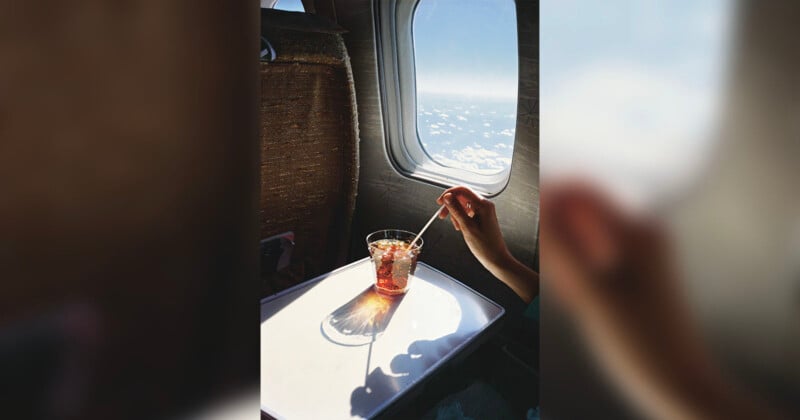William Eggleston Print Sells for $1.44 Million at Auction

A print of William Eggleston’s has set a new record for the highest price achieved by the photographer after it was sold at a Christie’s New York auction.
The famous photo, Untitled, 1971-1974, shows a cocktail on an airplane and comes from the artist’s Los Alamos series. On Thursday (Nov 21), it sold for $1.33 million.
The pigment print, flush-mounted on board picture was printed in 2012 and is work number one from an edition of two. HENI News reports that it has once been traded in the past.
The $1.44 million figure represents a 40 percent jump on the photographer’s previous record price of $1.02 million set on October 13, 2008 for a set of 75 dye-transfer prints from the Los Alamos series, according to Zach Dobson.
Untitled, 1971-1974 comes from that same Los Alamos series which saw him wander across the American South with the writer and curator Walter Hopps between 1965 and 1974.
The photos that Eggleston created during these trips were set aside and rediscovered nearly 40 years later. The pictures weren’t published and exhibited until 2003.
According to legend, when Eggleston and Hopps passed by the Los Alamos National Laboratory in New Mexico in 1973, Eggleston smiled and said, “You know, I’d like to have a secret lab like that myself”.
Eggleston is considered one of the foremost American photographers of his generation. His solo exhibition of color photographs at the Museum of Modern Art (MoMA) in 1976 is credited as an important turning moment in the history of the medium because curators and collectors began to take color photos seriously as an art form.
Before Eggleston, color photographs simply were not in the realm of art; the visual language of black-and-white photographs had long been accepted as not only the preferred style but the only truly acceptable form for a serious art photograph.
Only photographers like Alfred Stieglitz, Edward Weston, and Ansel Adams were taken seriously in the art world. Likewise, serious Guggenheim Fellows like Robert Frank or Lee Friedlander photographed almost exclusively in black and white.
Christie writes that color was the domain of birthday parties and graduations, of snapshots made in front of monuments, and of weddings and pictures of pets. They were the domain of slick advertising pics and vernacular family photo albums.
Pioneering MoMA curator John Szarkowski said about his work: “If Eggleston’s perspective is essentially romantic, however, the romanticism is different in spirit and aspect from that with which we are familiar in the photography of the past generation.
“In that more familiar mode, photographic romanticism has tended to mean the adoption and adaptation of large public issues, social or philosophical, for private artistic ends … In Eggleston’s work, these characteristics are reversed, and we see uncompromisingly private experience described in a manner that is restrained, austere, and public.”